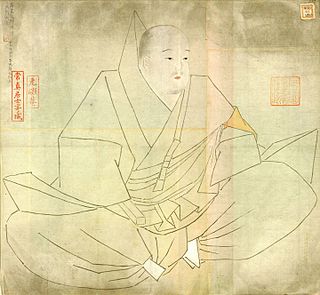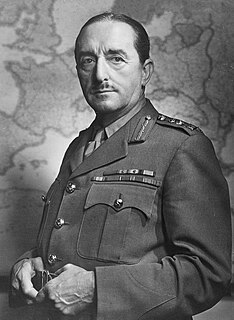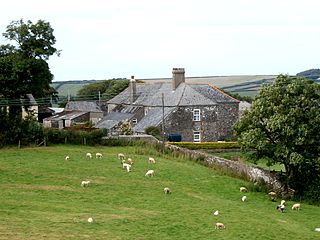Related Research Articles

Year 1129 (MCXXIX) was a common year starting on Tuesday of the Julian calendar.
The peerage title Earl of Buckingham was created several times in the Peerage of England. It is not to be confused with the title of Earl of Buckinghamshire.

The Lord High Constable of England is the seventh of the Great Officers of State, ranking beneath the Lord Great Chamberlain and above the Earl Marshal. This office is now called out of abeyance only for coronations. The Lord High Constable was originally the commander of the royal armies and the Master of the Horse. He was also, in conjunction with the Earl Marshal, president of the court of chivalry or court of honour. In feudal times, martial law was administered in the court of the Lord High Constable.

Hardinge Stanley Giffard, 1st Earl of Halsbury, PC QC later KC was a British lawyer and Conservative politician. He served three times as Lord High Chancellor of Great Britain, for a total of seventeen years.

Catherine Sedley, Countess of Dorchester, Countess of Portmore, daughter of Sir Charles Sedley, 5th Baronet, was the mistress of King James II and VII both before and after he came to the throne. Catherine was noted not for beauty but for her celebrated wittiness and sharp tongue.
Walter Giffard was Lord Chancellor of England and Archbishop of York.

Addingrove is a former hamlet in Buckinghamshire, about 4 miles (6.4 km) northwest of the market town of Thame in neighbouring Oxfordshire. The settlement is on the B4011 road between Oakley and Long Crendon.

Bronllys Castle is a motte and bailey fortress standing south of Bronllys, towards Talgarth in Powys, Wales. The original castle, constructed of wood, was founded in or soon after 1100 by Richard Fitz Pons, the owner of the nearby Herefordshire barony of Clifford, who was a supporter of Bernard of Neufmarché.
John Giffard, Baron Giffard of Brimsfield (1232–1299) was an English nobleman prominent in the Second Barons' War and in Wales. His initial gift of land in Oxford led to the foundation of Gloucester College, Oxford.

Halsbury is a historic manor in the parish of Parkham in North Devon, England. It is situated 2 miles north-east of the village of Parkham and 4 miles south-west of the town of Bideford. Halsbury was long a seat of the ancient Giffard family, a distant descendant of which was the celebrated lawyer Hardinge Stanley Giffard, 1st Earl of Halsbury (1823–1921), who adopted the name Halsbury for his earldom and was the author of the essential legal reference books Halsbury's Statutes. Halsbury Barton, now a farmhouse, retains 16th- and 17th-century elements of the former manor house of the Giffard family. It was described in a record of 1560 as a "new dwelling house".
Giffard is an Anglo-Norman surname, carried by a number of families of the Peerage of the United Kingdom and the landed gentry. They included the Earls of Halsbury and the Giffards of Chillington Hall, Staffordshire. Notable people with the surname include:

Stoke Lyne is a village and civil parish about 4 miles (6.4 km) north of Bicester, Oxfordshire in southern England.
Walter Giffard, Lord of Longueville in Normandy, 1st Earl of Buckingham was an Anglo-Norman magnate.
Walter Giffard (c.1225–1279), was the Chancellor of England and archbishop of York.
Osbern Giffard was one of the knights who invaded England in 1066 under William the Conqueror. He was rewarded with holdings throughout Gloucestershire, Hampshire, Wiltshire and Somerset. He settled in Brimpsfield, Gloucestershire, where he built a castle which was destroyed by Edward II in 1322. It is believed that the Gloucestershire village of Stoke Gifford is named after him. Giffard's nephew Walter became the 1st Earl of Buckingham.

Weare Giffard is a small village, civil parish and former manor in the Torridge district, in north Devon. The church and manor house are situated 2 1/2 miles NW of Great Torrington in Devon. Most of the houses within the parish are situated some 1/2-mile east of the church. The church is situated on a hillside to the north and slightly above the wide and flat valley floor of the River Torridge. The Church of the Holy Trinity and the adjacent Weare Giffard Hall are designated members of the Grade I listed buildings in Devon.
Walter - Gautier Giffard, Lord of Longueville, Normandy, was a Norman baron, a Tenant-in-chief in England, a Christian knight who fought against the Saracens in Spain during the Reconquista and was one of the 15 or so known companions of William the Conqueror at the Battle of Hastings in 1066.

Count of Longueville is a French noble title, whose holder had the fiefdom of the County of Longueville. The County was erected into a Duchy in 1505.